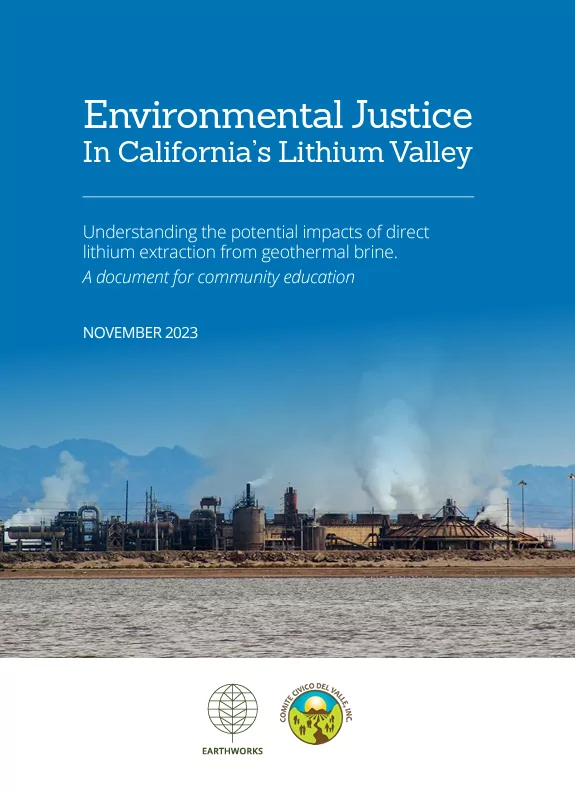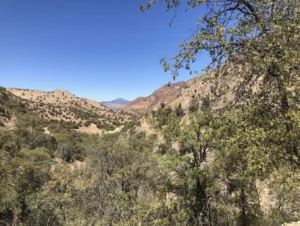The goal of this report is to educate frontline communities and the public about the potential environmental impacts of lithium extraction in Imperial Valley. This is important from an environmental justice perspective because disadvantaged communities living near proposed lithium projects already suffer disproportionately from air pollution and other environmental health hazards. Furthermore, Indigenous communities have raised concerns about potential impacts on cultural sites at the Salton Sea.
Demand for lithium, used in electric vehicle batteries, is skyrocketing, and Imperial Valley is home to one of the largest lithium deposits in the world, earning it the moniker “Lithium Valley.” The lithium is found in hot brine more than 1,500 feet under the south shore of the Salton Sea. Geothermal power plants use the brine to produce low-carbon electricity, and three companies are exploring ways to extract lithium from the brine before it is reinjected into the geothermal reservoir.
- WATCH: Lithium and Environmental Justice in Imperial Valley Webinar
- ADD YOUR NAME: Action Alert (Deadline on February 20, 2024):
Direct lithium extraction, as it is known, is promoted as more environmentally friendly than other types of lithium mining—but it has never been used at commercial scales, and communities in Imperial Valley have raised questions about the potential impacts to land, air, water, and public health. While the industry often makes favorable comparisons of how little water direct lithium extraction will use compared to lithium mining in other parts of the world, a lack of transparent data sources makes these comparisons challenging to verify.
The report is based on a review of academic literature, government documents, and publicly available documents related to specific lithium projects. It identifies five areas of impact that must be thoroughly understood and mitigated before any lithium extraction project moves forward:
- AIR QUALITY: Construction and operation of lithium and geothermal facilities in Imperial Valley may impact already degraded air quality through emissions of particulate matter, greenhouse gases, and hydrogen chloride.
- FRESHWATER CONSUMPTION: Lithium extraction projects will consume Colorado River water for cooling and processing. If the lithium industry expands to its planned capacity, it will exceed the freshwater currently allocated by the Imperial Irrigation District for non-agricultural use.
- SALTON SEA DEGRADATION: The Salton Sea is rapidly shrinking, exposing harmful dust contaminated by pesticides and fertilizers. If water is diverted from agriculture to lithium production, it may speed up the shrinking of the Sea, exacerbating the air quality issue and compromising restoration efforts.
- HAZARDOUS WASTE AND MATERIALS: The direct lithium extraction process will produce hazardous byproducts harmful to human health, such as arsenic, lead, and cadmium, that must be safely disposed of.
- SEISMIC ACTIVITY: While lithium extraction itself is unlikely to have an impact on earthquake risk in this seismically active area, further geothermal development might.



